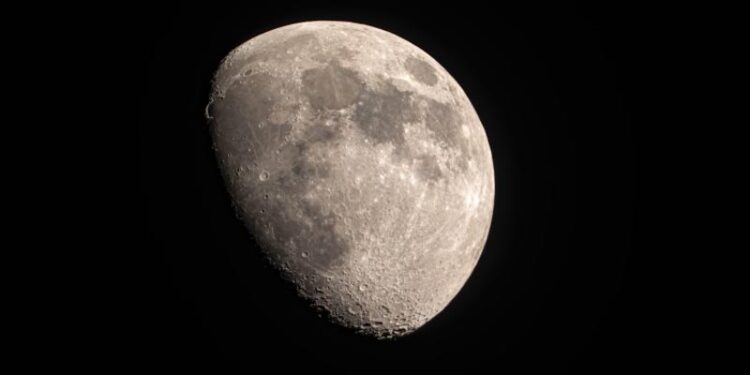Scientists unravel the origin of Titanium-rich lunar basalts

The dark areas on the surface of the moon, which we can also recognise from Earth, consist of basalts.
© Jasper Berndt-Gerdes
International research team measures isotopic composition of lunar rocks.
An international team of geoscientists from the Universities of Münster and Bristol in England have explained why a large part of the moon is made up of unique rocks that do not occur on Earth. The results have now been published in the scientific journal “Nature Geoscience”.
Their high Ti contents are ultimately believed to be derived from a distinct mineralogical layer formed as part of the unstable crystal pile that constituted the lunar interior following solidification of a magma ocean, shortly after Moon formation. However, models to date have been unable to reproduce magma compositions with anomalously high Ti that also exhibit other appropriate chemical and physical characteristics, not least sufficiently low density to allow their eruption.
Scientists from the University of Münster, together with colleagues from the University of Bristol, show convincingly that a key step in creating and erupting these distinctive magmas is partial reaction of initial melts from a Ti-rich source with more abundant components of the lunar interior. This is shown through high-temperature experiments and a finger-print of incomplete reaction provided by documenting a distinctive isotopic composition of the element magnesium. These combined lines of evidence clearly illustrate the process of melt-solid reaction that creates the archetypal lunar high-Ti basalts, simultaneously explaining their composition and density. This new understanding resolves a major puzzle in lunar geology. The results have now been published in the scientific journal “Nature Geoscience”.
Wissenschaftliche Ansprechpartner:
Prof. Dr Stephan Klemme
Institut für Mineralogie | University of Münster
E-Mail: stephan.klemme@uni-muenster.de
Phone: +49 251 83 33047
Originalpublikation:
https://doi.org/10.1038/s41561-023-01362-5
https://www.uni-muenster.de/news/view.php?cmdid=13810&lang=en
Media Contact
All latest news from the category: Earth Sciences
Earth Sciences (also referred to as Geosciences), which deals with basic issues surrounding our planet, plays a vital role in the area of energy and raw materials supply.
Earth Sciences comprises subjects such as geology, geography, geological informatics, paleontology, mineralogy, petrography, crystallography, geophysics, geodesy, glaciology, cartography, photogrammetry, meteorology and seismology, early-warning systems, earthquake research and polar research.
Newest articles

Innovative 3D printed scaffolds offer new hope for bone healing
Researchers at the Institute for Bioengineering of Catalonia have developed novel 3D printed PLA-CaP scaffolds that promote blood vessel formation, ensuring better healing and regeneration of bone tissue. Bone is…

The surprising role of gut infection in Alzheimer’s disease
ASU- and Banner Alzheimer’s Institute-led study implicates link between a common virus and the disease, which travels from the gut to the brain and may be a target for antiviral…

Molecular gardening: New enzymes discovered for protein modification pruning
How deubiquitinases USP53 and USP54 cleave long polyubiquitin chains and how the former is linked to liver disease in children. Deubiquitinases (DUBs) are enzymes used by cells to trim protein…



